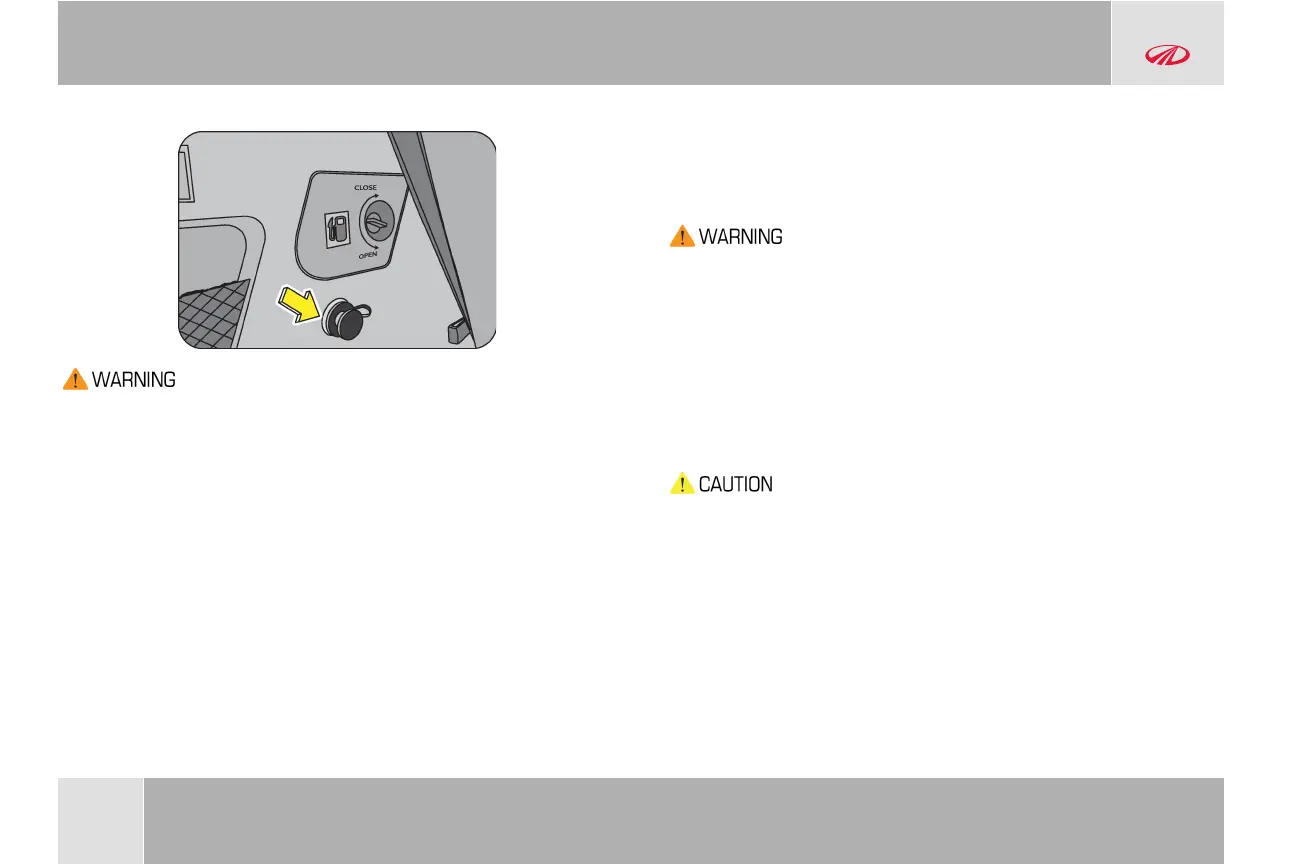
 Loading...
Loading...
Do you have a question about the Mahindra XUV 500 and is the answer not in the manual?
| Brand | Mahindra |
|---|---|
| Model | XUV 500 |
| Category | Automobile |
| Language | English |
Welcome message and importance of reading the owner's manual for safe vehicle operation.
Explanation of symbols used in the manual to highlight safety information and procedures.
Provides essential guidelines and warnings for safe vehicle usage, maintenance, and operation.
Refers to a separate manual for detailed information on audio and infotainment system features.
Details the physical dimensions of the vehicle, including wheelbase, length, width, height, and track width.
Lists recommended lubricants and their capacities for various vehicle systems like engine, transmission, and brakes.
Explains the function of fuses and relays as electrical protection devices and how to identify a blown fuse.
Provides instructions and safety precautions for dealing with a flat tire during driving.
Identifies and labels external components of the vehicle's front view.
Identifies and labels external components of the vehicle's rear view.
Identifies and labels the various controls and components on the vehicle's instrument panel.
Overview of the instrument cluster, identifying gauges and indicators like speedometer and tachometer.
Provides a visual guide to the location and numbering of warning and telltale lamps in the instrument cluster.
Detailed explanation of each warning lamp, its symbol, pre-check status, and action/remarks.
Guidance on sitting in the correct position for comfort and safety in the front seats.
Comprehensive warnings and instructions on seat belt usage, inspection, and proper positioning.
Detailed procedure on how to correctly fasten the 3-point seat belt for optimal protection.
Information on using child restraint systems and their proper seating positions based on child's mass group.
Overview of the vehicle's airbag system, including frontal, side, and curtain airbags.
Details on the SRS airbag system for driver and front passenger, including deployment conditions.
Information on side impact airbags, their purpose, and deployment during side collisions.
Guidance on the airbag system malfunction lamp and when to contact an authorized dealer.
Instructions on how to open, lock, and unlock vehicle doors from inside and outside.
Explanation of the central locking system's functionality for locking and unlocking all doors simultaneously.
Details on activating and deactivating child safety locks on rear doors for child passenger safety.
Information on the RKE system's buttons, operation, and precautions for handling the key.
Overview of the quadruple power window switch and its functions, including ORVM controls.
Information on manual and electric ORVMs, their adjustment, folding, and selector switches.
Description of various utility holders like console trays, centre console storage, and cup holders.
Details on the vehicle's 12V power outlets, their locations, and usage precautions.
Instructions on operating windshield wipers, including different modes and auto-wipe functionality.
Guidance on operating the electric sunroof, including opening, closing, and the anti-pinch function.
Detailed explanation of the instrument cluster components, including gauges and indicators.
Comprehensive guide to all warning and telltale lamps, their meanings, and required actions.
Information on the power steering system, its operation, and precautions to prevent damage.
Details on the braking system, including disc brakes, pad wear indicators, and wet brake precautions.
Explanation of the ABS system's function in preventing wheel lock-up and ensuring vehicle control.
Introduction to the HVAC system, its controls, and function for cabin comfort.
Description of climate control types (Automatic and Manual) and their respective controls.
Guidance on adjusting cabin temperature using the temperature control dial for cool or hot air.
Instructions on using the front windshield defogger to clear mist and fog.
Essential safety checks and preparations to perform before starting the vehicle.
Procedure for starting the engine, including pre-cranking checks and troubleshooting.
General driving precautions to minimize accident risks and ensure safe operation.
Recommendations for improving vehicle performance and fuel efficiency through driving habits and maintenance.
Explanation of the ESP system's function in enhancing directional control and stability.
Details on the Stop/Start system's function for better fuel efficiency and reduced emissions.
Information on the correct type of fuel to use and precautions regarding fuel quality and handling.
Information on Diesel Exhaust Fluid (DEF), its SCR technology, and recommendations for its use.
Details about tire construction, size, load limit, and tread wear.
Importance of proper tire inflation for safety, economy, and ride comfort, including inspection procedures.
Guidelines and methods for rotating tires to ensure even wear and prolong tire life.
Explanation of the Tiretronics system for monitoring tire pressure and its operation.
Instructions on using hazard warning flashers for emergency signaling and visibility.
Troubleshooting steps for when the vehicle engine does not start or cranks slowly.
Steps to cool down an overheated engine and precautions to take before driving again.
Procedure and safety precautions for jump starting a vehicle with a discharged battery.
Explanation of Limp Home Mode, its causes, symptoms, and recommended actions.
Information on vehicle maintenance requirements, warranty, and service suggestions.
Step-by-step guide on how to safely open and close the vehicle's hood.
Checklist of general maintenance items for inside and outside the vehicle to be performed frequently.
Checks to be performed in the engine compartment, including fluid levels and component inspection.
Procedure for checking and topping up engine coolant level, including safety precautions.
Guidance on checking and topping up brake and clutch fluid levels, with safety warnings.
Instructions for checking and topping up power steering fluid, including precautions against system damage.
Recommendations for washing the exterior, protecting paint, wheels, plastic parts, and windows.
Guidelines for maintaining the air conditioning system for efficient operation and environmental protection.
Instructions for replacing headlamp bulbs, with safety precautions and specifications.
Recommended maintenance intervals for various vehicle components based on distance or time.











